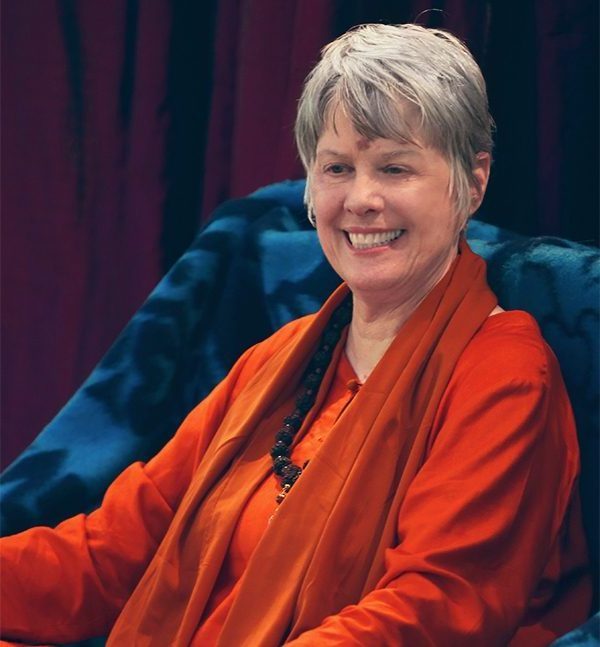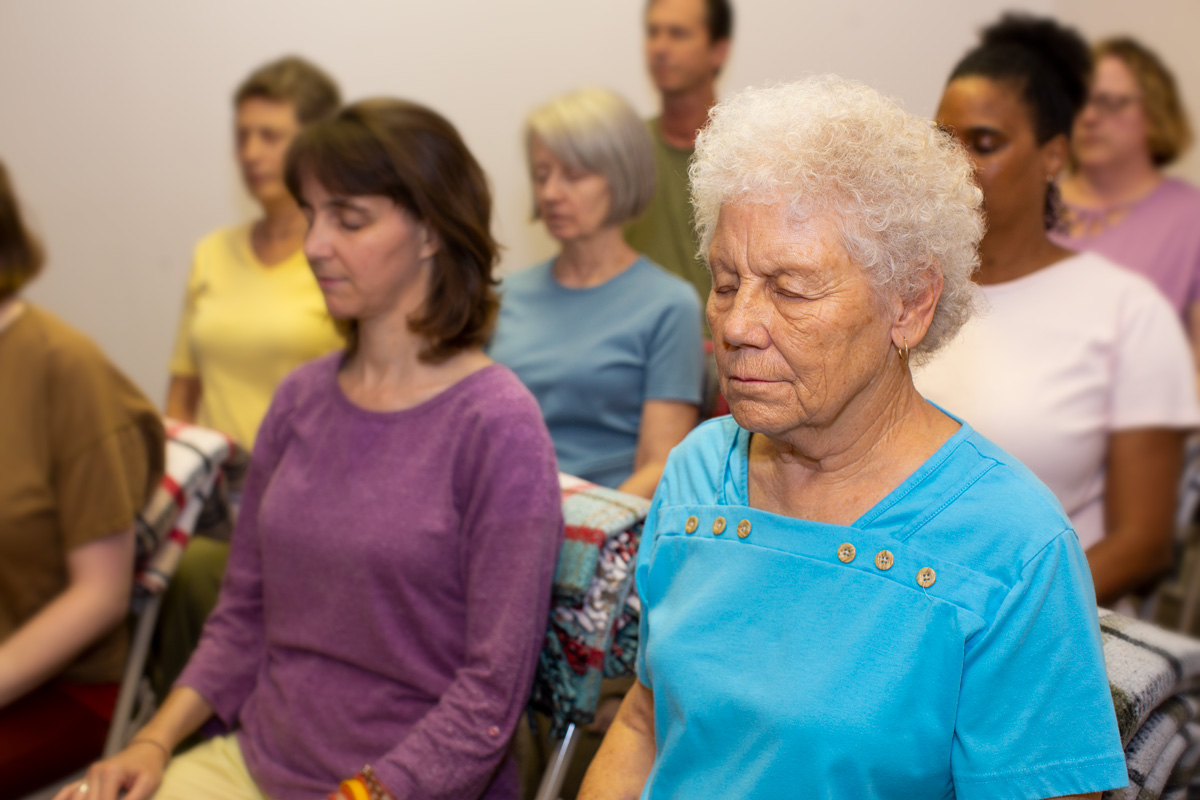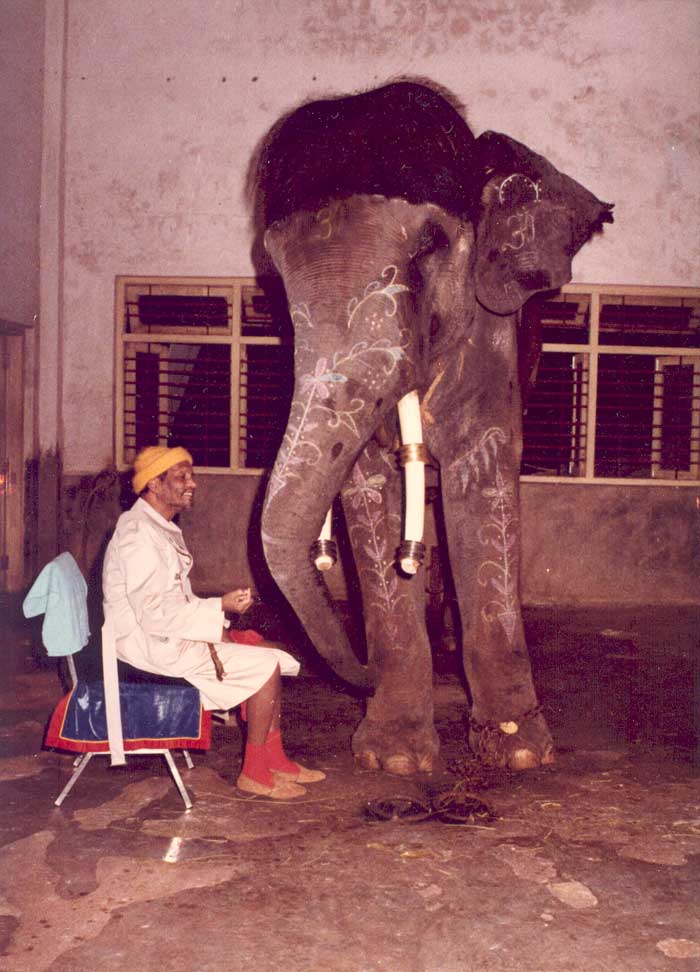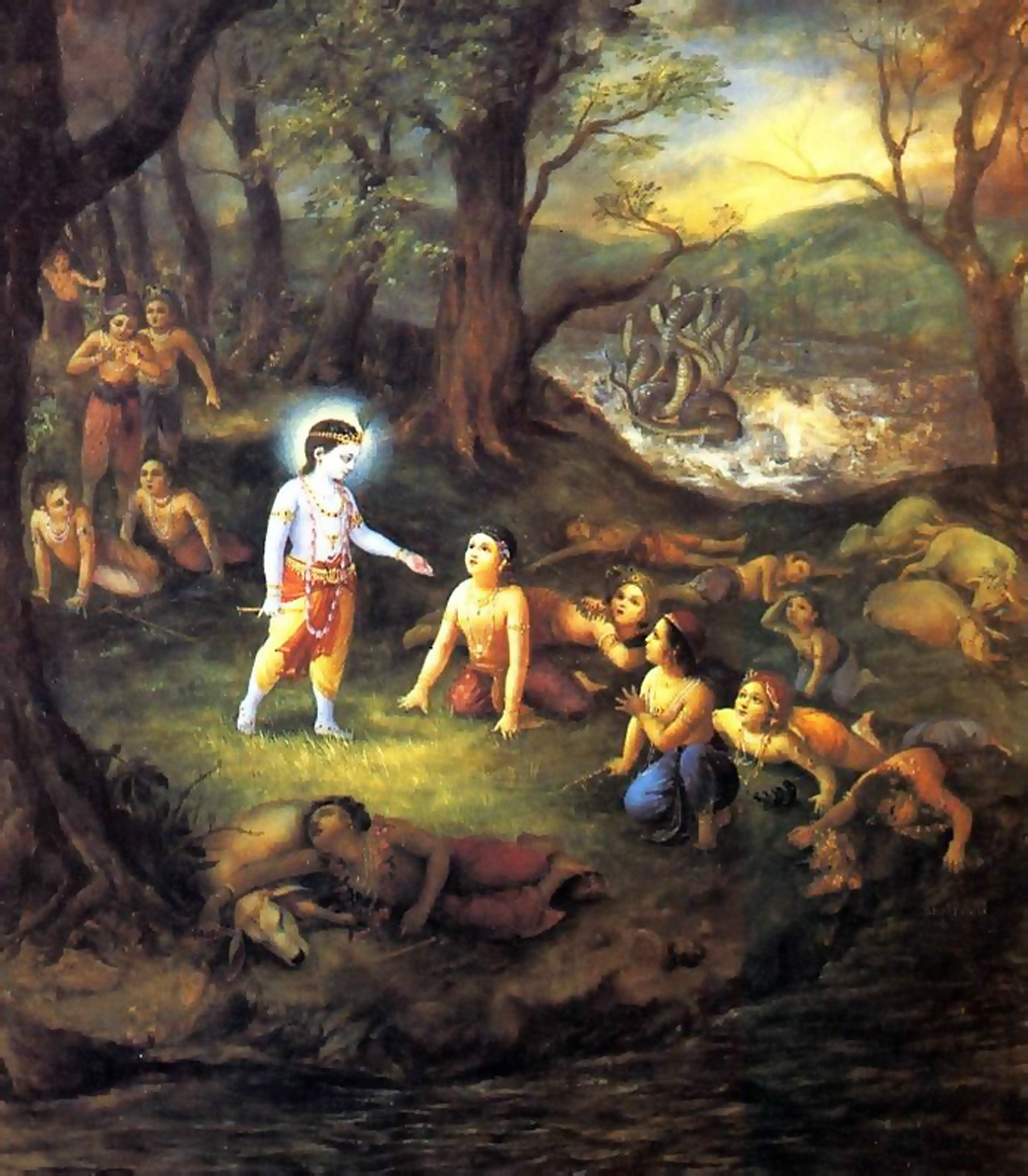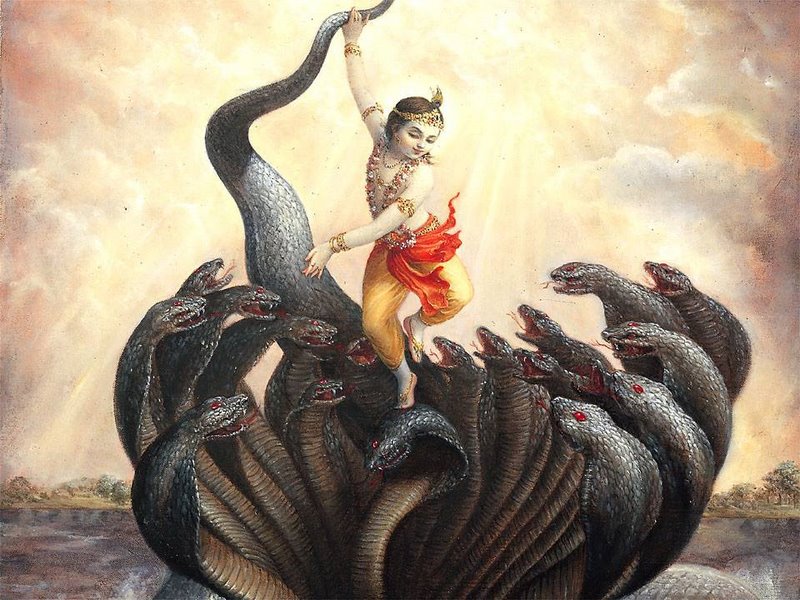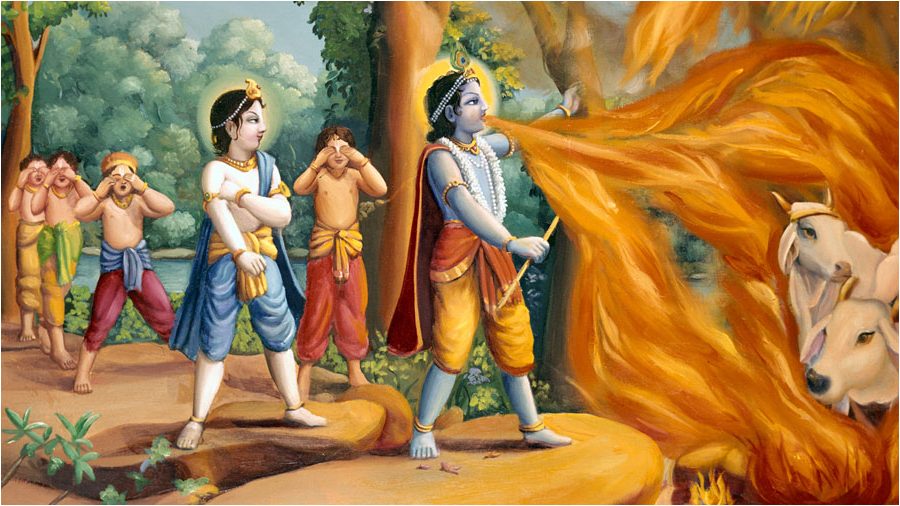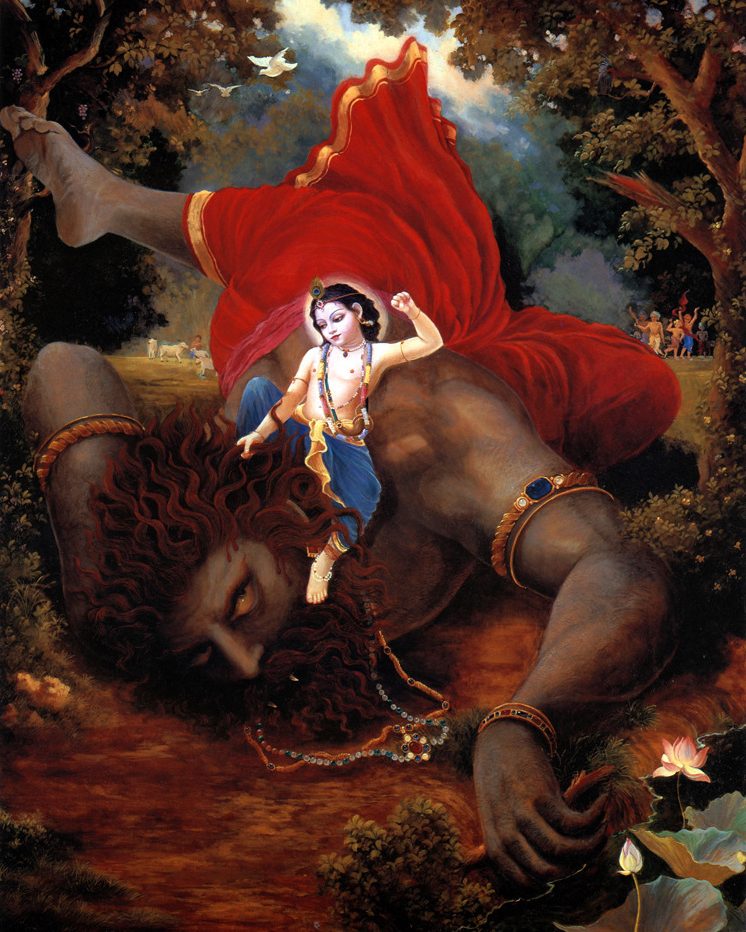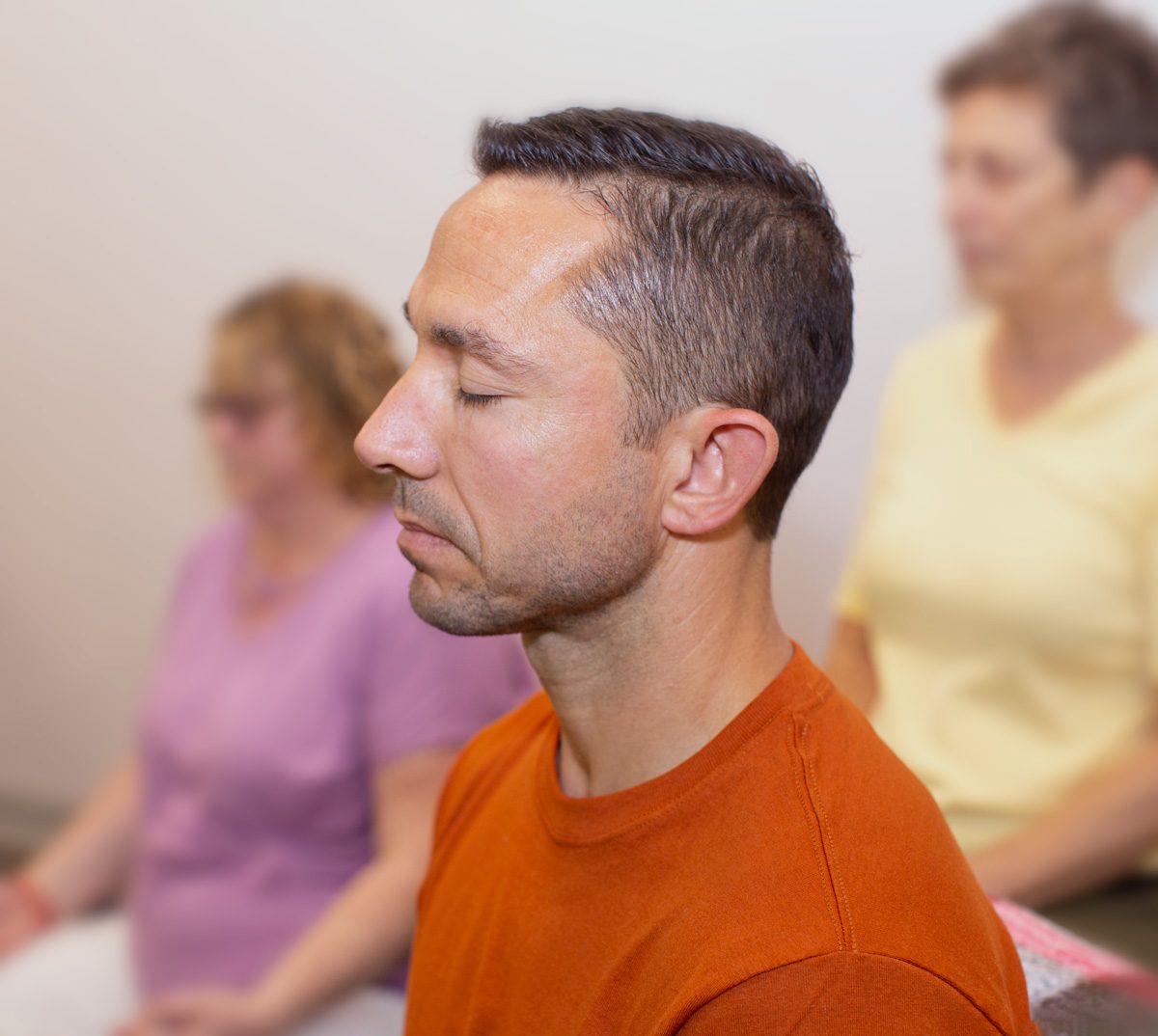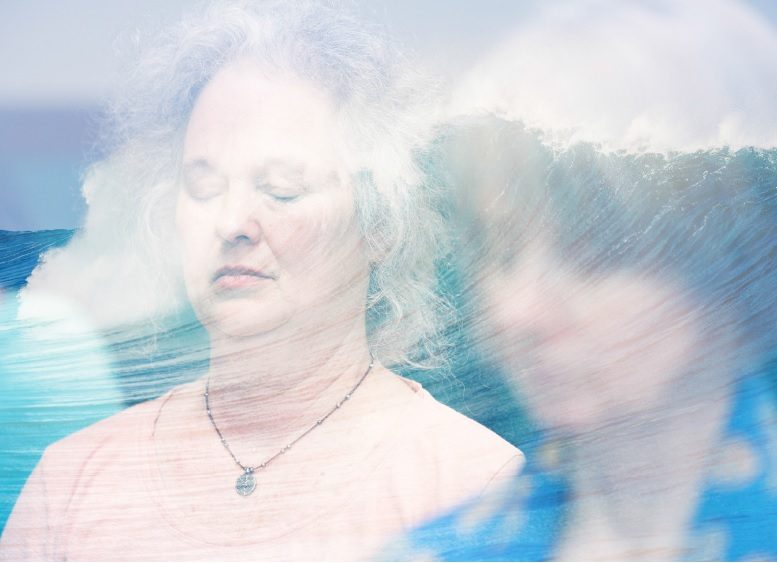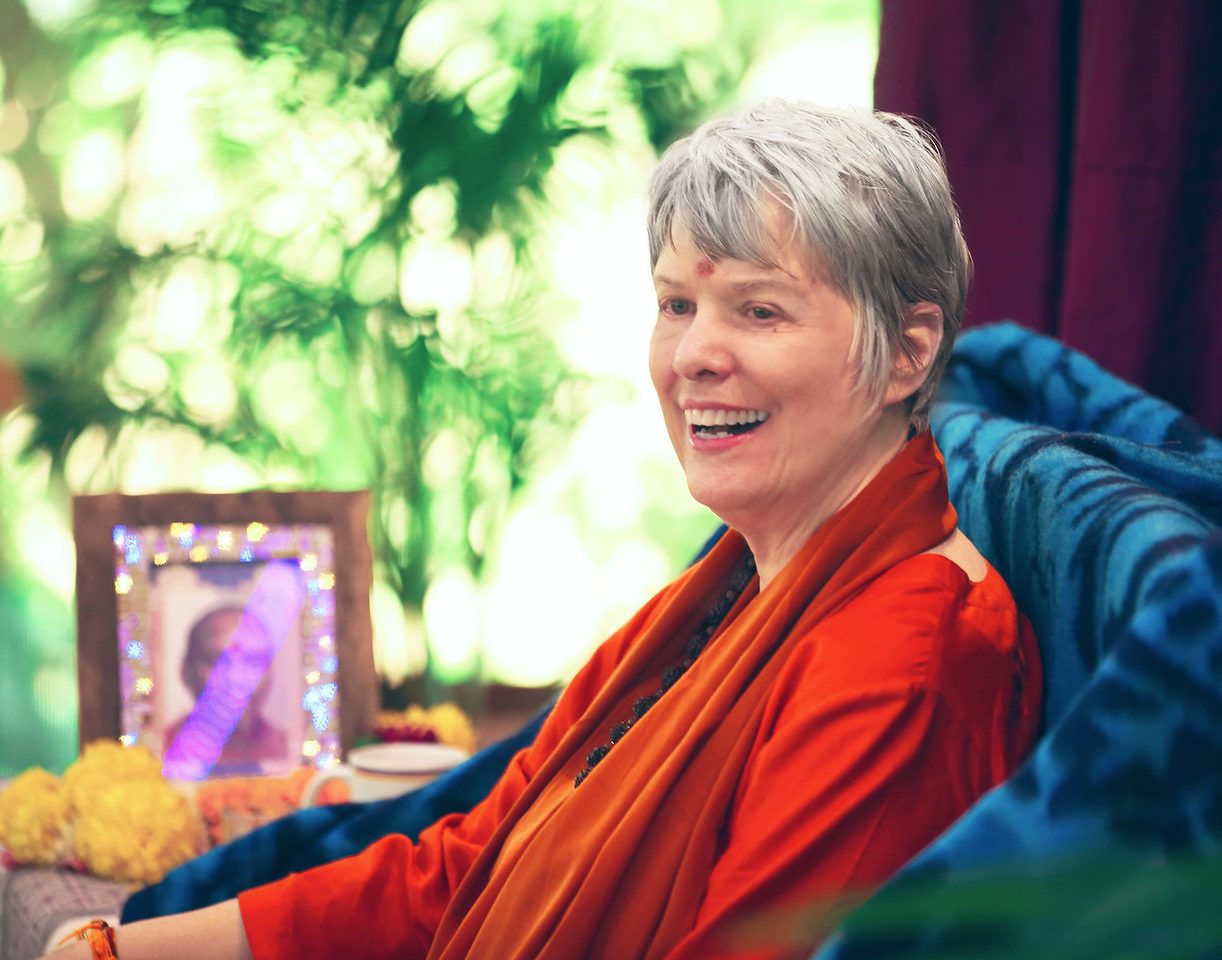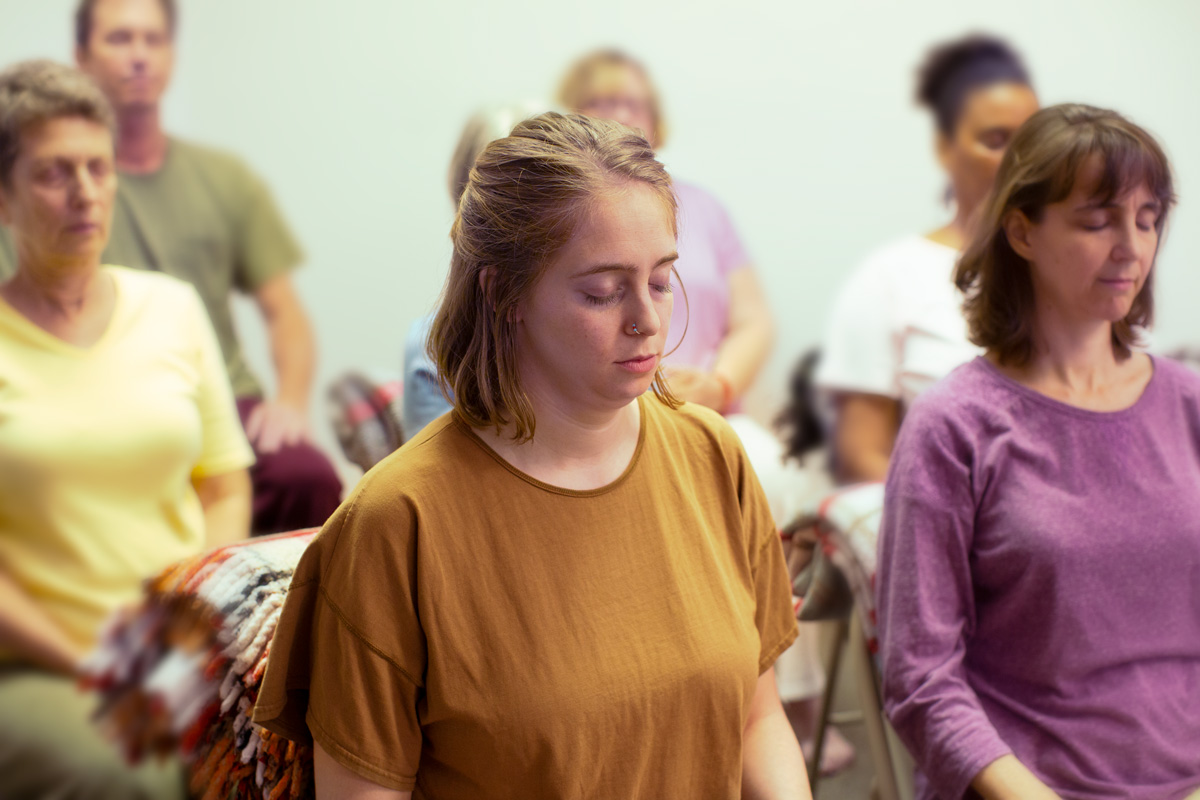 by Nirooshitha Sethuram
by Nirooshitha Sethuram
Krishna was growing up fast in Gokul, his brother Balarama by his side. They loved each other so much that one couldn’t live without the other. Both of them were very mischievous. Especially Krishna, whose many amazing exploits reminded Yashoda of the words of Garga Muni, who named Krishna, announcing that the Supreme Lord had appeared as this child…
It was another beautiful day, almost noon-time. A woman was walking with a basket of fruit on her head, shouting “Fruits, fruits…” She was poor and had only a few fruits to sell to keep her family fed. Krishna heard her calling and ran out to the street to get some fruit. He didn’t have any money. Those fruits looked very yummy and Krishna wanted them badly. He looked around and found a pile of grain. As bartering was usual those days, picked up a handful of grain and ran to the fruit seller. On the way to the seller, because of his tiny little hands, he lost half of the grain he had taken, leaving only a few grains in his hand. He reached out and gave the woman the few grains he had in his hand. Looking at the few grains, the woman smiled at Krishna, the grace-filled little boy. She happily gave him the fruits he could hold. Krishna jumped up in joy, took the fruits and ran back into the house to eat them.
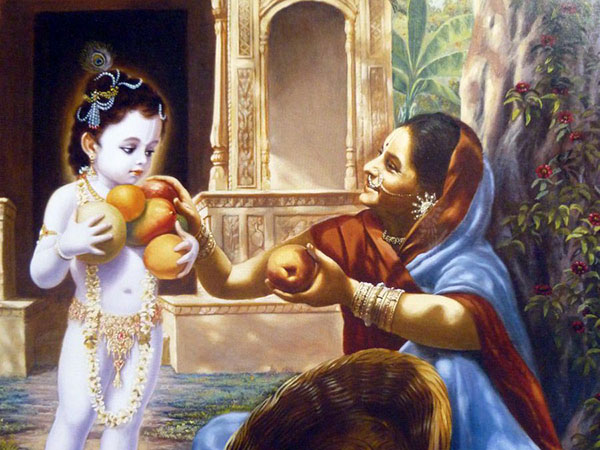 Wondering how she was going to feed her family, she lifted the basket to go home, and was amazed to find the basket heavy with gemstones, including rubies, emeralds, diamonds instead of the grains, with gold ornaments and other precious metals. She was unable to understand what happened but thanked God for them and went home glorifying the divine. Krishna was watching through the window laughing at the amazement of the woman.
Wondering how she was going to feed her family, she lifted the basket to go home, and was amazed to find the basket heavy with gemstones, including rubies, emeralds, diamonds instead of the grains, with gold ornaments and other precious metals. She was unable to understand what happened but thanked God for them and went home glorifying the divine. Krishna was watching through the window laughing at the amazement of the woman.
Though Gokul had been a peaceful place to live, all the recent demonic attacks had made it unsafe. Nanda and the elders met to come up with a solution. They decided to move to the nearby village Vrindavan, both for safety reasons and because it had lush grass for their cows, along with the nearby forest and of course the river Yamuna, as in Gokul.
Within a day, they packed up everything in their carts, gathered their cattle and started their trek to Vrindavan. On the way, the Gopiis started to sing about Krishna; it was a delight to all the travellers. When they arrived, the Govardhana hills, the rich green pastureland and the beautiful Yamuna river was in sight. It seemed a great place to live and all were happy.
In the city, Kamsa still clung to his thought of eliminating his enemy, killing Krishna. After the death of the demons he’d sent, Putana and Trinavarta, he knew his enemy was no ordinary being. He understood that he needed a far more powerful demon than the ones he sent earlier. He was very anxious because he didn’t know where Devaki’s eighth son was. He sent his spies all around, thus finding out the whole village of Gokul had moved to Vrindavan. This made him very suspicious. Some time later his suspicion was confirmed to be true: a spy confirmed that Krishna was in Vrindavan. Happy now, Kamsa could target Vrindavan in order to kill Krishna. He called upon a ferocious demon called Vatsasura (the calf demon), ordering him to go to Vrindavan and kill Krishna.
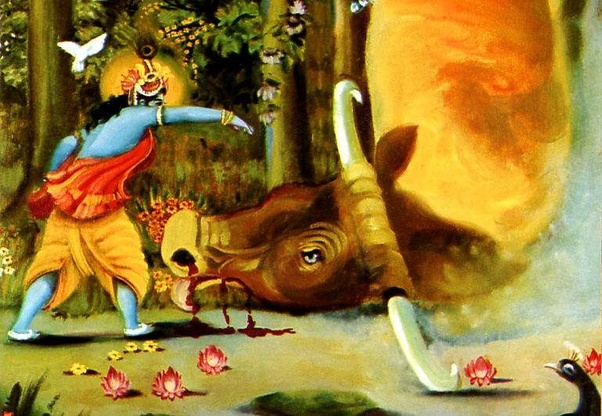 Krishna, Balarama and their friends were big enough to take the calves out for grazing daily. One day, while they were attending to the calves, Vatsasura took on the form of a calf, mingling with the other calves in order to get near Krishna and do the job he was sent for. As soon as Vatsasura entered the herd, Krishna noticed him and gestured to Balarama, who is always ready to confront danger. While Vatsasura was trying to hide and blend in, Balarama went right in front of him, to distract him. Krishna snuck behind the demon and caught hold of the calf’s hind legs. Lifting the demon high above his head, he whipped it round and round and threw him toward a huge tree. Hitting the tree hard, the calf fell to the ground. Vatsasura returned to his demon form, lying dead on the ground.
Krishna, Balarama and their friends were big enough to take the calves out for grazing daily. One day, while they were attending to the calves, Vatsasura took on the form of a calf, mingling with the other calves in order to get near Krishna and do the job he was sent for. As soon as Vatsasura entered the herd, Krishna noticed him and gestured to Balarama, who is always ready to confront danger. While Vatsasura was trying to hide and blend in, Balarama went right in front of him, to distract him. Krishna snuck behind the demon and caught hold of the calf’s hind legs. Lifting the demon high above his head, he whipped it round and round and threw him toward a huge tree. Hitting the tree hard, the calf fell to the ground. Vatsasura returned to his demon form, lying dead on the ground.
The residents of Vrindavan heard about Krishna’s valor, which increased their love and devotion towards him more than before. They begin to believe their Guru Gargacharya’s predictions about Little Krishna, that he is no ordinary child, that he is a Divine Incarnation.
This was another failure for Kamsa. He was troubled and worried, thinking he needed a stronger demon. He remembered Bakasura (the crane demon), a much stronger demon and Putana’s brother. Kamsa told Bakasura that he had found his sister’s killer, Krishna, who was living in Vrindavan. Kamsa promised Bakasura a handsome reward for killing Krishna. As soon as Bakasura heard the name of his sister’s killer, he was enraged. He accepted Kamsa’s request and took off without wasting any time.
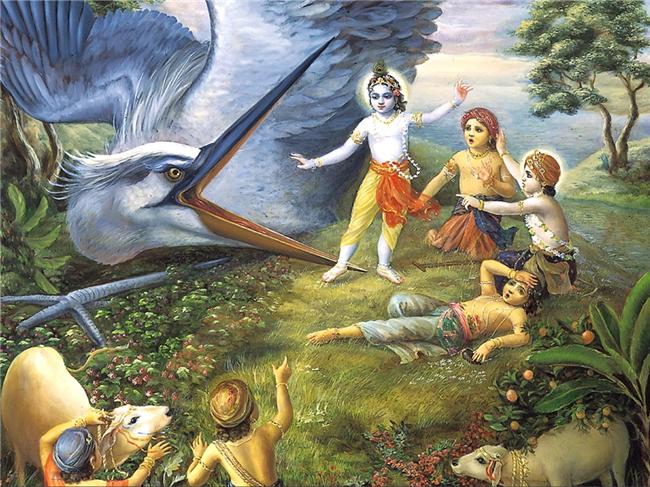 Krishna, Balarama and their friends as usual took the calves to the pastures early in the morning, then to the Yamuna River for water. When they were resting, they saw a shadow of a crane over the river and pasture. The bird looked like a mountain with its beak stretching several yards in front of it. Krishna knew it was Bakasura who had taken the form of a crane.
Krishna, Balarama and their friends as usual took the calves to the pastures early in the morning, then to the Yamuna River for water. When they were resting, they saw a shadow of a crane over the river and pasture. The bird looked like a mountain with its beak stretching several yards in front of it. Krishna knew it was Bakasura who had taken the form of a crane.
Krishna walked towards the crane while the others held back. Acting quickly, as soon as Krishna was close, Bakasura snatched him up with his long beak and swallowed him, thinking he had successfully killed Krishna. Seeing this, all the kids froze in fear except for Balarama, who obviously knew what Krishna was up to.
While in the crane’s long throat, Krishna glowed with radiance, producing a lot of heat. Unbearable heat! The crane spat out Krishna in a hurry as its thin throat was being burnt. Krishna jumped to the ground. Bakasura attacked him with his beak again. Krishna grabbed hold of the beak and tore it apart, killing Bakasura. Another demon killed.
The younger brother of Putana and Bakasura learned that Krishna killed his siblings. Aghasura (the serpent demon) felt so much vengeance that he decided to wipe out the whole of Vrindavan. He disguised himself as a giant serpent, waiting for the children with his mouth open. He resembled a mountain cave, his lower lip resting on the ground, with his upper lip touching the clouds like a mountain peak and his tongue resembling a path through the mountain cave.
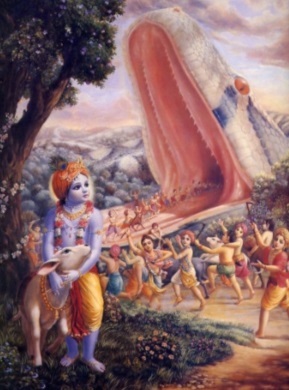 Krishna and his companions were coming along in groups, playing and dancing while herding the calves. The first two or three groups entered what they thought was a mountain cave, impressed with the smooth road, which was actually the serpent’s tongue. They fell unconscious due to the venomous fumes inside the snake’s mouth.
Krishna and his companions were coming along in groups, playing and dancing while herding the calves. The first two or three groups entered what they thought was a mountain cave, impressed with the smooth road, which was actually the serpent’s tongue. They fell unconscious due to the venomous fumes inside the snake’s mouth.
Aghasura kept still as his goal was to kill all of them, especially Krishna, so that their parents would also will die in grief. Thus, the whole of Vrindavan would be destroyed. Krishna recognized the demon immediately when he saw it. He had to devise a plan to kill the serpent without hurting his friends and the calves already in its stomach.
Krishna walked into the mouth of the huge serpent. Aghasura was very happy that Krishna had fallen into his trap. In the serpent’s throat, Krishna started growing larger and larger, blocking its airway. This made the serpent unable to gasp any air, so it died. Krishna opened the snake’s mouth and brought all the boys and calves out. He brought them back to consciousness by his divine powers.
Aghasura attained moksha by the grace of Krishna. The Devas and all the celestial began celebrating this divine union. The celebration and news of Krishna’s glory reached Satyaloka, the residence of Lord Brahma.
After slaying Aghasura, the boys were having lunch, joking and laughing. But when they finished eating, they noticed something strange. Oh no! All the calves were missing… where did they go? Did they wonder around and lose their way? Krishna wanted all of them to stay calm and to stay in one place, so he went to look for the calves. Searching everywhere in the forest, he couldn’t find any trace of them. Wondering what had happened, he returned to the spot where his friends were waiting for him to tell them the sad news. But all of his friends were now gone.
Through his divine powers, Krishna saw what was going on. Lord Brahma had a little doubt in Krishna, as to whether he was really Lord Vishnu, especially since Krishna was acting just like a little boy, playing with other kids, even being a usual teenager with some might and powers. So, Lord Brahma was testing him. Lord Brahma had put the calves and the kids into a deep sleep and hid them in a cave. Krishna smiled to himself, planning an answer for Lord Brahma.
 The all-pervading Krishna manifested as each and every one of his missing friends and the missing calves, exactly how they were. He returned to the village as usual with all his friends in the evening. The mothers of the Gopalas and the calves welcomed them like never before, pouring their love out to them as they never had before. They didn’t know that this was because they had the opportunity and the highest blessings of being the parents of Lord himself.
The all-pervading Krishna manifested as each and every one of his missing friends and the missing calves, exactly how they were. He returned to the village as usual with all his friends in the evening. The mothers of the Gopalas and the calves welcomed them like never before, pouring their love out to them as they never had before. They didn’t know that this was because they had the opportunity and the highest blessings of being the parents of Lord himself.
After some time, Lord Brahma came to see what Krishna was doing without his friends. To Lord Brahma’s astonishment, Vrindavan was as it had been before he’d hidden the kids. In disbelief, he went back to the cave where the kids were hidden, thinking maybe Krishna had found them, but Lord Brahma found them still sound asleep. He went back and forth between the cave and Vrindavan a couple of times to make sure.
When Krishna saw this, he turned himself along with all his friends and the calves in Vrindavan into Lord Vishnu’s form, only for Lord Brahma’s eyes. Seeing Krishna’s true form and understanding his mistake, Lord Brahma rushed down to offer his respect to Krishna and brought all the kids and the calves back to Vrindavan. Everything was back to what it was earlier.
Now Krishna, Balarama and the other friends were older, so they started to take the calves and the cows further into the pasture. One day, going farther along one of the pathways, they came to a beautiful forest, where they could smell the fragrance of the fruits and flowers. They had been warned to stay away from this forest of palm trees called Taalavana, due to Dhenukasura (the donkey demon).
Dhenukasura was surrounded by other small demons, also taking the form of donkeys, not letting anyone into that forest so that nothing was taken from there. The kids were enthusiastic to go in and get some of the never before eaten fruits. Krishna hinted to Balarama to go in and do the needful. Balarama went into the forest, followed by Krishna and their other friends.
Balarama shook the trees with his mighty strength, making the ripe fruits fall to the ground. Jubilantly picking and tasting the fruits, the kids completely forgot about the demons who were taking their afternoon nap. All the noise from Balarama’s shaking of the trees woke Dhenukasura. Angry that someone had entered his forest and awakened him from his nap, Dhenukasura appeared in front of Balarama and started kicking his chest with his hind legs, sounding like an earthquake.
 At first Balarama was patient, though it was not his usual nature. But then he got very angry and took hold of Dhenukasura’s hind legs, wheeled the donkey around and tossed it up into the treetop. The demon came crashing down, landing dead on the forest floor. The wheeling and the tossing made the forest look as though a tornado had hit the area.
At first Balarama was patient, though it was not his usual nature. But then he got very angry and took hold of Dhenukasura’s hind legs, wheeled the donkey around and tossed it up into the treetop. The demon came crashing down, landing dead on the forest floor. The wheeling and the tossing made the forest look as though a tornado had hit the area.
The fight between Balarama and Dhenukasura woke all the other demons. Wanting to avenge Dhenukasura’s death, they charged at Balarama. Skillfully, both Balarama and Krishna killed all the demons by doing the same thing Balarama had done to Dhenukasura. From the monkeys to the birds, all the creatures of the area were so happy to be able to come to the forest to enjoy the fruits for the first time.
More to come…
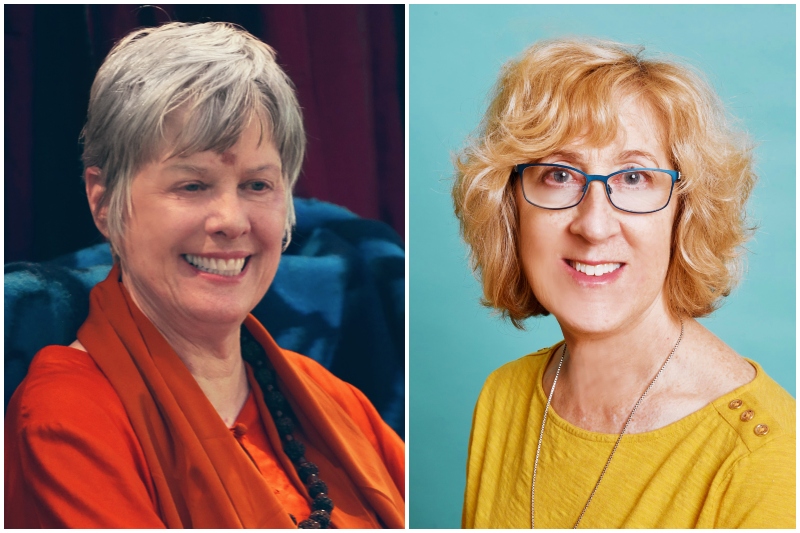 by Gurudevi Nirmalananda & Swami Shrutananda (the yogi formerly known as Vidyadevi)
by Gurudevi Nirmalananda & Swami Shrutananda (the yogi formerly known as Vidyadevi)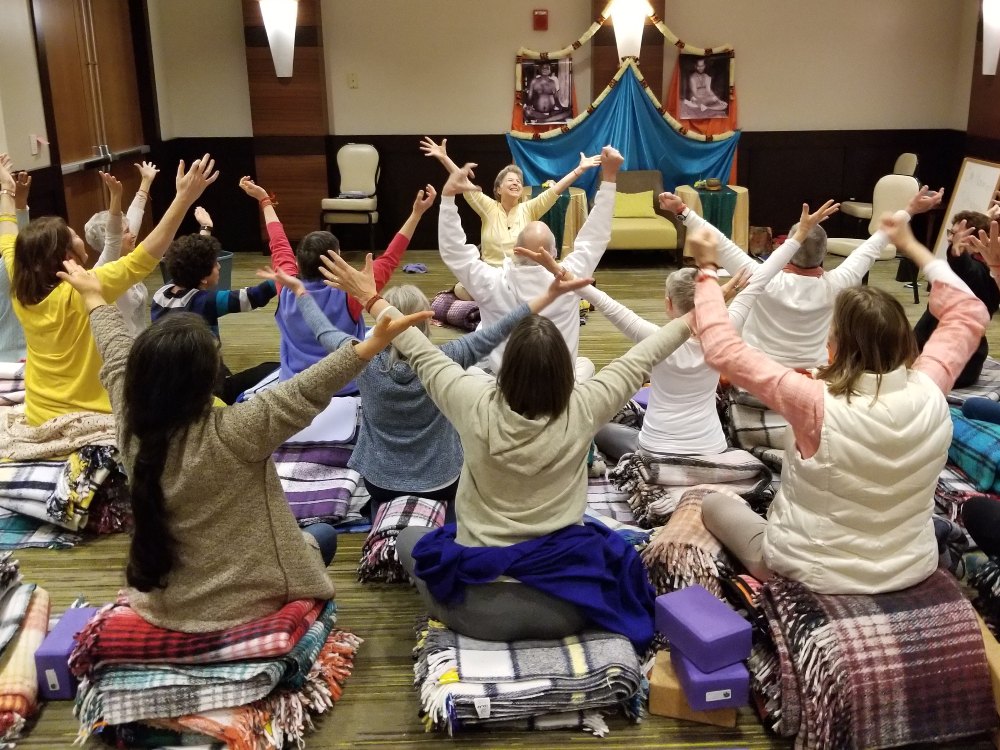 You already have these deep inner experiences in Svaroopa® yoga classes, in your own home practice and especially in Svaroopa® Vidya meditation. By plunging deep within, having the inner experience of the extremely subtle reality within, you know that which you already are, your own Self as Consciousness-Itself.
You already have these deep inner experiences in Svaroopa® yoga classes, in your own home practice and especially in Svaroopa® Vidya meditation. By plunging deep within, having the inner experience of the extremely subtle reality within, you know that which you already are, your own Self as Consciousness-Itself.